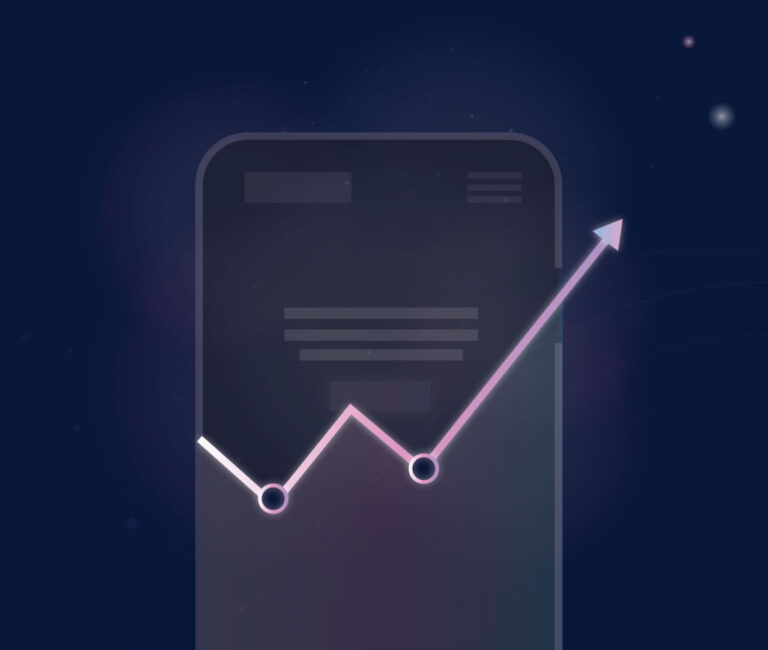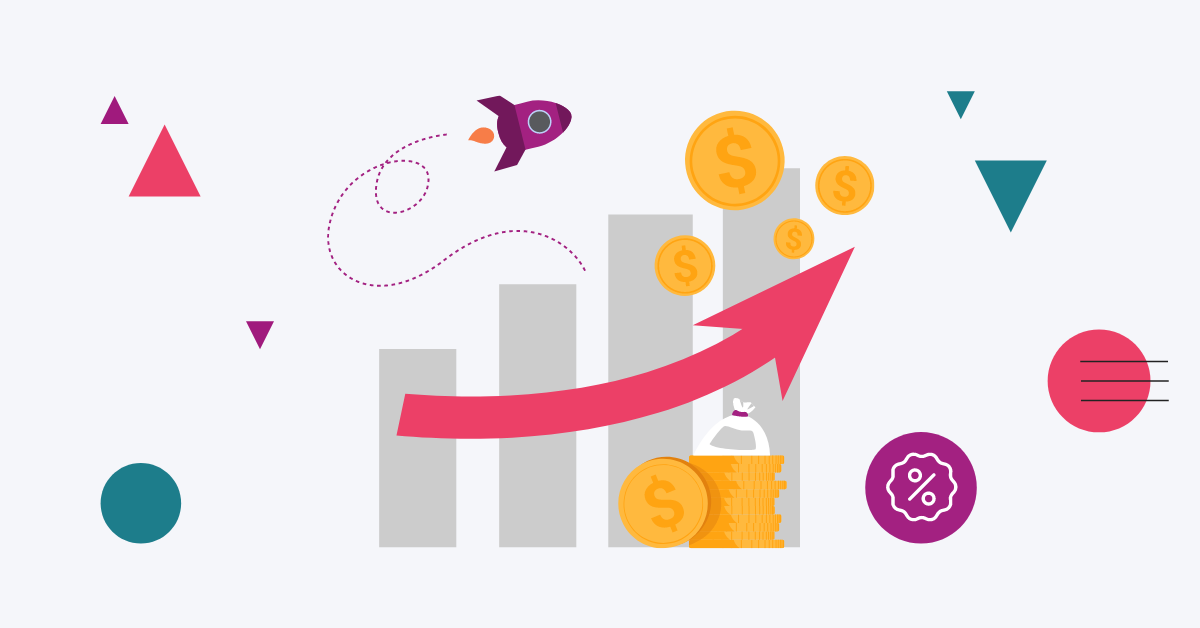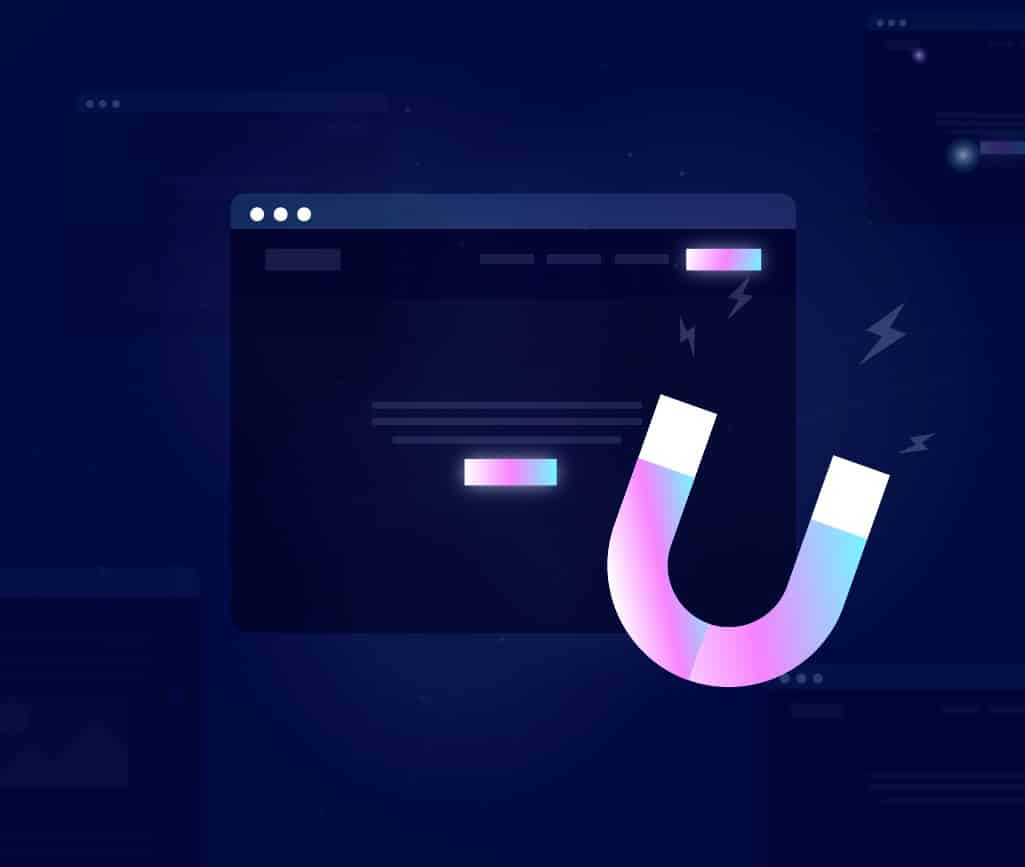Conversion Optimization
6 minute read
What is Website Conversion Rate and How to Calculate and Improve it?.
LAST UPDATED:
June 13, 2023


According to the Cambridge Dictionary, conversion is the process of converting something from one form to another.
However, in marketing terminology, the following moments caused by a call-to-action (CTA) define conversion:
- Opening of email sent by a company
- Filling up a form on a website
- Participating in a giveaway
- Placing an order
Conversion converts visitors into customers, adding them to a company’s existing Customer Relationship Management (CRM) database.
Therefore, every conversion matters, bringing the marketer closer to the customer.
Companies must use their best marketing efforts to acquire more customers and increase the conversion rate.

The conversion rate is the number of conversions divided by the number of visitors to your website. It is the percentage of the number of visitors that have performed a specific action on your website.
The conversion rate is generated when a CTA(call-to-action) is placed, like placing an order or filling up a form.
For example, if an eCommerce website sees 100 visitors per month and has 25 sales, the conversion rate would be 25 divided by 100, or 25%.
Depending on the traffic you see on your website, you can segment metrics of eCommerce websites and calculate their versions of conversion rates.
Protip
You should be following and tracking several different eCommerce metrics to help you see where your website’s strengths and weaknesses include to aid in your optimization efforts.
There are two common types of conversion rates that need to be calculated:
- New visitor conversion rate
- Returning visitor conversion rate
The formula for accurately calculating the conversion rate is simple: conversion/total visitors x 100. Different versions of the same formula can be used like the following:
- Conversion rate = total number of conversions/total number of session x 100
- Conversion rate = total number of conversions/total number of unique(first-time visitors) x 100
- Conversion rate = total number of conversions/total number of leads x 100
Conversion rates play a significant role in measuring the performance of your web page and applications.
Once you know what factor influences your customer to complete a CTA, you can strategize accordingly for your business objectives.
A set of meaningful and impactful actions will make your business’s growth easier.
Some of the other areas of marketing where conversion rates are needed are:
- Identifying marketing channels that work for your business
- Foreseeing ROI while setting up a campaign
- Improving the UX of an app in case of a lower conversion rate than expected
- Highlighting areas of improvement while creating and measuring the effectiveness of different marketing channels
There is a need for tools and resources that can help businesses fulfill their objectives earlier via conversion rates.
This is where conversion rate optimization tools can be helpful as they take care of the above mentioned elements by generating more website traffic and conversions.
Conversion rate is no rocket science and can be upped using different techniques. Figuring out what works best for your website and applications will take time.
However, the following techniques have proved effective for increasing conversion rates and must be a part of your marketing strategies.
1. Emphasize Your CTA

The CTA or the call to action option has the most impact on translating the conversion rates on your website.
Examples of CTA are options like “Add to cart” or “Subscribe to the newsletter” and are commonly used on eCommerce websites.
Changing the position of the CTA on the web page or using a more catchy term or button can improve conversions.
2. Personalized Landing Pages
If you want more visitors to keep returning to your website, providing a rich and personalized user experience should be on your list.
Protip
User experience conversions are significant to an in-depth understanding of your potential customers and customer loyalty.
Personalization doesn’t just end at greeting each visitor with their name.
Understanding customer behavior and providing targeted content, as Netflix does, is a great way to drive conversion rates.
3. Improve Page Speed
A slow-loading web page is the biggest turn-off for people on a website.
Most visitors leave a page if it doesn’t load within 5 seconds of clicking on it. Visitors who bounce to other pages do not convert.
Therefore, it is necessary to improve page speeds as it directly impacts the conversions on your web page.
4. Test Different Layouts and Styles on the Landing Page

Landing pages do the job of informing people about your business offering and its uniqueness and guiding them on how to proceed if interested. The layout and the style of your landing page are all equal contributors in this game of convincing.
Too much content or the overuse of different colors on your landing page will cause your visitor to drift away. It is better to experiment with these elements to see which ones contribute to the maximum conversions.
5. Induce FOMO in Visitors
FOMO, or the fear of missing out, is a well-known psychological phenomenon in marketing.
Use proof in the form of numbers, customer testimonials, and case studies to create a need for your business offering in the visitors’ lives.
As a result, you will either see newer visitors to your website or higher sales. These factors work in your favor, contributing to a better conversion rate.
6. Optimize for Mobile Devices

In today’s fast-paced world, people search online for multiple things while on the go. Most mobile devices are now advanced and can handle numerous functions at once.
For eCommerce, mobiles are their highest value generators as many visitors access websites on their mobiles. Once you have nailed the syntax on a mobile device, conversion rates are bound to be higher.
1. Yieldify
Yieldify is an all-in-one personalization platform that transforms the way your website operates.
Ample functions like A/B testing, centralization of performance data, and customized experiences are provided by Yieldify.
It enhances the quality of a customer journey by increasing the average value order and improving the conversion rate on your website.
From ideation to execution, Yieldify has got you covered!
2. HubSpot
HubSpot is a marketing automation platform that provides insights into your website’s current and prospective visitors.
Its easy interface helps you manage and monitor different marketing channels’ performance and look for optimization opportunities.
Most of HubSpot’s features are free, making it an excellent tool for your business to invest in!
3. Google Analytics
Google Analytics is a widely used self-service and accessible business intelligence tool.
Businesses must make the best use of the features and functions it provides to improve their conversion rate.
Sufficient data is collected by Google that can be helpful for CRO, like data on visitor demographic, buyer personas, bounce rate, devices used, and more.
4. SurveyMonkey
SurveyMonkey is a research-based CRO tool that is used by most companies worldwide. It designs online surveys with the best visuals and layouts possible.
Its easy interface and customized survey setup process justify its demand in the market.
With various survey templates, question types, and data analytics, you can trust SurveyMonkey to improve the conversion rate on your website.
5. Optimizely
Optimizely is an experimental CRO platform where you can test out different things.
For example, if you think the conversion rate would improve if the CTA button is blue instead of red, this is the tool you use to test it out.
Using artificial intelligence, Optimizely can test the same feature simultaneously across multiple devices.
You can also run different tests on the same page without affecting its performance.
Inventing new ways of testing proven methods of improving conversion rates is simpler than imagined.
Understanding processes from a customer’s perspective is all you need to understand what your next steps should be.
Your time, efforts, products, and investments will be worth it when you receive a notification that a visitor has purchased something on your website.
Looking to increase your conversion rate optimization of your website? Contact us, we can help boost your site’s conversion rate and help establish an optimization process.
Author
Jeff Gapinski is the President of Huemor where he helps plan the long-term strategic growth of the agency. Jeff is passionate about UI/UX, demand generation, and digital strategy.
What Do You Think?
Have feedback? Maybe some questions? Whatever it is, we'd love to hear from you.








No comments found